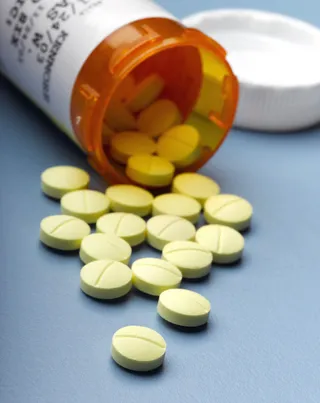Inside the Urban Health Crisis With Dr. Sampson Davis
An emergency room physician talks health education.

1 / 14
The Emergency Room Perspective - Health education is more important now than ever according to Dr. Sampson Davis, author of Living and Dying in Brick City, which is an exploration of the health care crisis plaguing urban communities. Davis talked to BET.com about making it out of Newark, New Jersey, giving back to his community and the importance of access to health care. — Dominique Zonyeé (@DominiqueZonyee)(Photo: Ben Hider/Getty Images)

2 / 14
A Pact for Health - Growing up in Newark, New Jersey, an area of high crime and poverty, Dr. Sampson Davis didn’t think his future would include a medical degree. But when a robbery plot gone wrong landed him in a juvenile detention center at 17 years old, Davis saw it as a second chance. He and his two friends, Rameck Hunt and George Jenkins, formed a pact to become doctors.(Photo: Anthony Barboza/Getty Images)

3 / 14
The Power of the Pact - “I absolutely 100 percent emphatically encourage young brothers to make a pact to do something positive,” Davis told BET.com. He and his friends studied medicine together at Seton Hall University and channeled their energy into helping one another study. “It’s amazing how big you can dream when you surround yourself with likeminded people.”(Photo: Chris Hondros/Getty Images)

4 / 14
Giving Back - Davis decided he wanted to be an advocate for health in 1999 after his first few days on the job as an attending emergency room physician at Beth Israel Medical Center in Newark, the same hospital where he was born.(Photo: Tom Meinelt-Jackson Lee / Splash News)

5 / 14
An Advocate for Health - “In the ER, I saw so many issues that could have totally been prevented if people were just in charge of their health," Davis said. “It became, ‘What can I do in my position to really get out there and be an advocate for health.’”(Photo: rubberball/GettyImages)
ADVERTISEMENT

6 / 14
Black Health Issues - In Living and Dying in Brick City, Davis highlighted some of the pertinent health ailments, which plague urban communities such as gun violence, drug abuse and health care accessibility.

7 / 14
Gun Violence - African-Americans have the highest rates of death by firearms, according to Davis, who saw more than enough Black men die from gunshot wounds. He was the doctor on hand when “Legend,” a familiar drug dealer from his neighborhood, died after his body was riddled with bullets. (Photo: Andrew Burton/Getty Images)

8 / 14
Prescription Drugs - More than 30,000 deaths per year occur from accidental overdoses, outnumbering car accident deaths, according to Davis. “Prescription drug use is something that is plaguing our society and is accepted because it’s not taboo,” Davis said. “If you tell someone, ‘I am using Percocet,’ it’s more accepting than saying I am using heroin for my pain.” Among African-American adolescents from 12-17, usage was close to the national rate in 2010, at 2.9 vs. 3.3 percent(Photo: Jeffrey Coolidge/Getty Images)
Photo By Photo: Jeffrey Coolidge/Getty Image

9 / 14
The Purpose of the ER - “I would see the same people come back to the ER again and again with the same issues, and they never followed up with the specialists,” Davis said. “The ER’s purpose is only to stabilize you so that you can go home, but you should follow up with your doctor to get the issues addressed.”(Photo: meshaphoto/Getty Images)

10 / 14
Fearing the Unknown - Davis said he has treated many patients in the ER for STDs who have ignored crucial symptoms and avoided regular check-ups because they are embarrassed or “scared.” “People have to understand that if they do have a disease, they are going to end up in the hospital regardless,” Davis said.(Photo: Thinkstock Images/Getty Images)
ADVERTISEMENT

11 / 14
Promoting Health Education - "[Health education] starts when you are in grammar school,” Davis said. He encourages parents to teach their children to get annual physicals and make their health a priority. If children familarize themselves with health care now, then it will not seem threatening in the future.(Photo: Garry Wade/Getty Images)

12 / 14
The Importance of Health Insurance - With more than 18 percent of African-Americans under 65 lacking health care insurance, Davis supports the Affordable Health Care Act and encourages people to meet the March 31 Obamacare deadline. “Insurance is a necessity,” Davis said. “You get insurance for your car; you need insurance for your body as well.”(Photo: AP Photo/Mel Evans, File)

13 / 14
How to Stay on Top of Your Health - Patients must establish lines of communication with their doctors and health care providers to understand what is covered and what tests or treatment is needed.” Dr. Davis encourages his patients to be their own health advocates. “To advocate for your health, you have to do the research. Start with doing research and possibly keeping a medical diary of your medications and which doctors you see.”(Photo: Jose Luis Pelaez/GettyImages)
